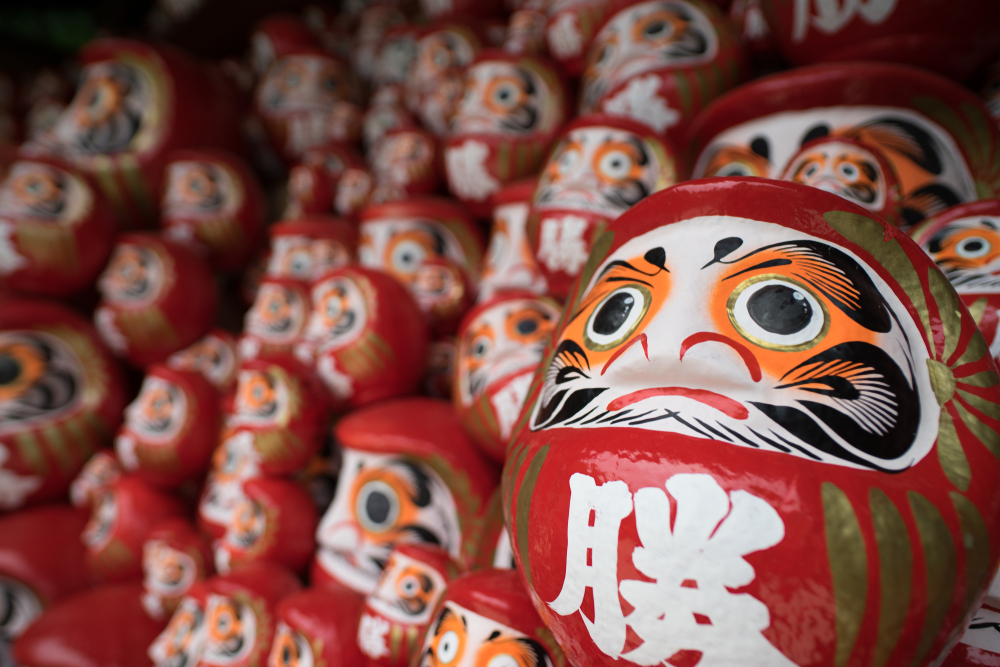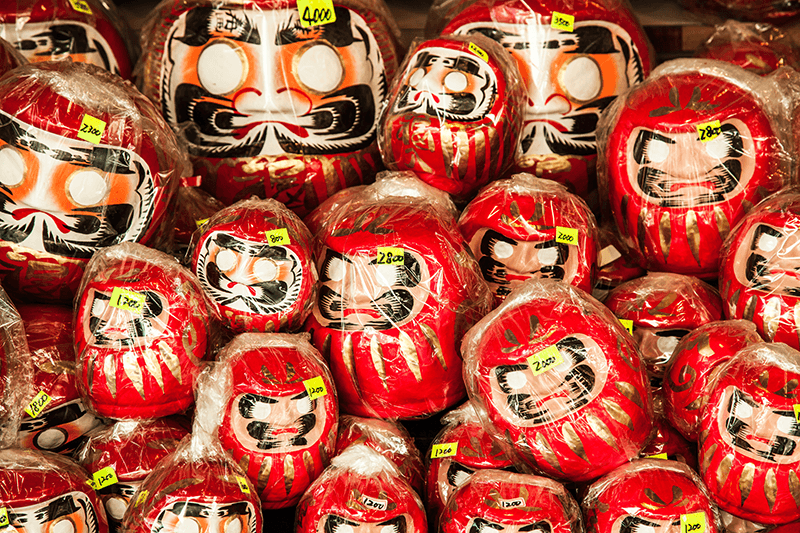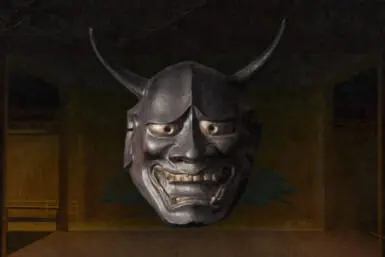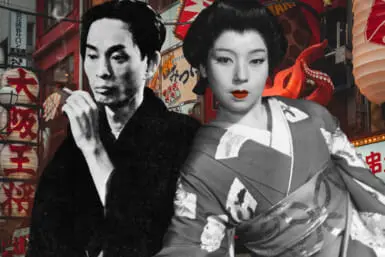What Is the Daruma Doll?
Other than sake that comes in cardboard juice boxes, one of the most peculiar souvenirs people bring back from Japan are Daruma dolls. These are small round figures painted red with great big mustaches and empty eyes that make them look as if they overdid it a bit on the boxed nihonshu. But they aren’t meant only for tourists. A lot of Japanese families actually own a mustachioed red ball with a thousand-mile stare of their own because, in Japan, the Daruma is a little bit like a genie that grants your wishes through blackmail.
When first purchased, Daruma dolls have blank, white eyes so that you can paint a new peeper onto them with a marker. Next, you wish for something like passing your next big exam, with the implicit promise that you’ll paint Daruma’s second eye on after he’s granted you your wish. Some people may also choose to write their wishes somewhere on the doll, to constantly remind it that if it ever wants to enjoy 3D movies again, it better start working on making your dreams come true. But the whole ocular extortion isn’t even close to the grizzliest parts of the doll. For that, we have to go back a few centuries and talk about what first inspired it.
The disturbing history behind the Daruma Doll…and it gets darker.
Daruma dolls are modeled on the monk Bodhidharma, the founder of Zen Buddhism, a sect that stresses the importance of meditation and the contemplation of the world in order to achieve enlightenment. Although not many historical records of the man remain today, legend goes that Bodhidharma once meditated for nine years straight without moving … which eventually caused his arms and legs to atrophy and fall off. That’s why the Daruma dolls look like they do. They are meant to resemble a head and torso missing all of its limbs, making the Daruma one of the most disturbing household ornaments since Elf on the Shelf.
It gets even darker, though. While, according to some source, the custom of painting eyes on the handicapped talisman is connected to Bodhidharma achieving enlightenment and opening his eyes to the truth of the universe, there is an alternative explanation for the custom. Another legend says that Bodhidharma fell asleep seven years into his nine-year meditation, and he got so angry at himself that he grabbed a knife and cut off his own eyelids so that he’d never fall asleep again. The story continues that once his amputated eyelids hit the ground, they made the first tea plants sprout, which explains why green tea helps you stay awake. Science may say that it’s because of all the caffeine inside it, but mythology teaches us that it’s because all tea is actually eyelid-plant juice.
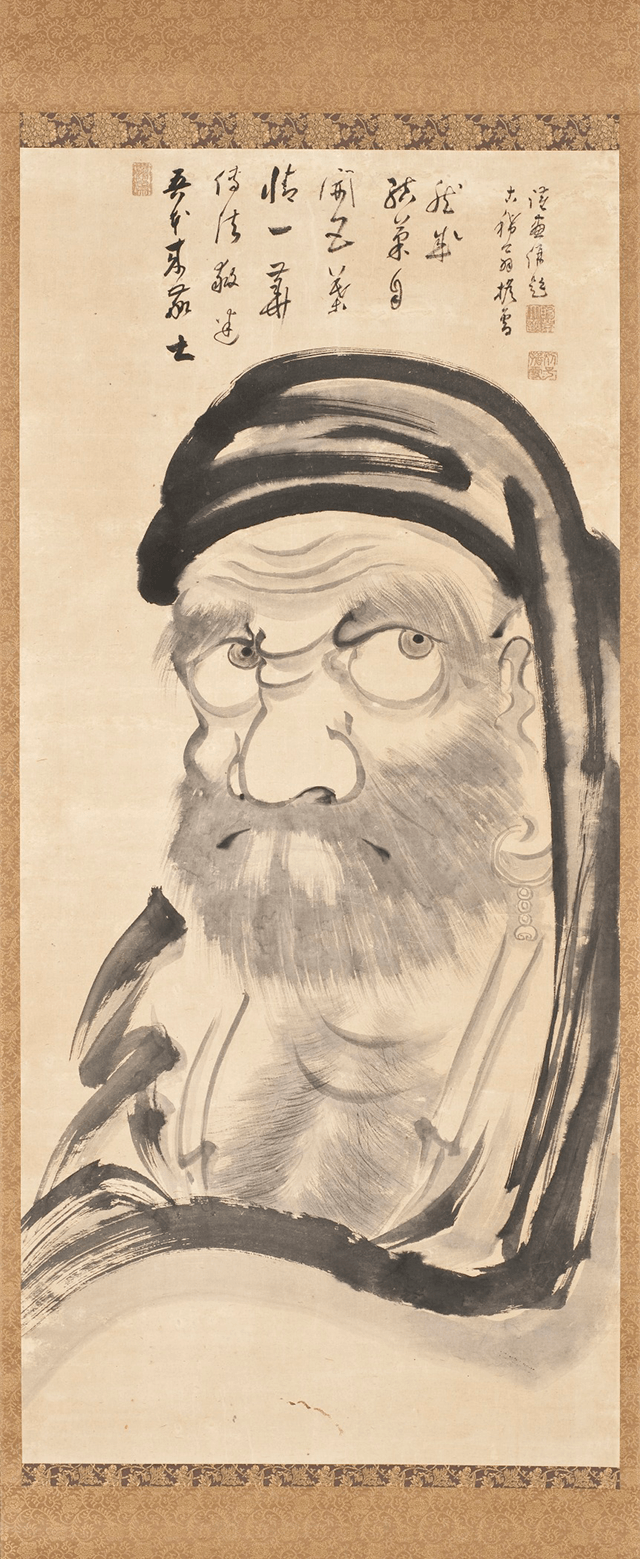
A depiction of the inspiration for the Daruma doll, the Zen patriarch Bodhidharma (By Taikan Monju (Japan, 1766-1842) [Public domain], via Wikimedia Commons
As if that wasn’t disturbing enough, even the color of Daruma dolls was inspired by pain and death. Daruma dolls actually come in a wide variety of colors like purple (which, according to tradition, you use to pray for health, self-improvement etc.), white (for love and purity), gold (for money and wealth), and many more depending on the region. But the reason why the figures are usually red today is because of the color’s association with measles and smallpox.
Though many modern Daruma dolls are balanced on little stands, originally, they were tumbling dolls that never fell over. No matter how many times you pushed them or knocked them down, they would always come right back. With time, this has made the doll into a symbol of resilience and recuperation, which was why the dolls were often given as gifts to sick people, especially children. Centuries ago, one of the most devastating childhood diseases in Japan were the measles and smallpox, which were closely connected to the color red. Children who came down with those illnesses had to wear red hoods, and if they died, they were often wrapped in red funeral robes or red fabrics, like in the Akira Yoshimura novel Shipwrecks (Hasen).
Eventually, Daruma became synonymous with smallpox red, and the dolls gained a whole new symbolism, going from simple good luck charms to the arbiters of life and death. And today, we put these powerful relics in our homes and hold their eyes hostage until they help us get a promotion at work, which kind of sounds like the beginning of a horror movie.

